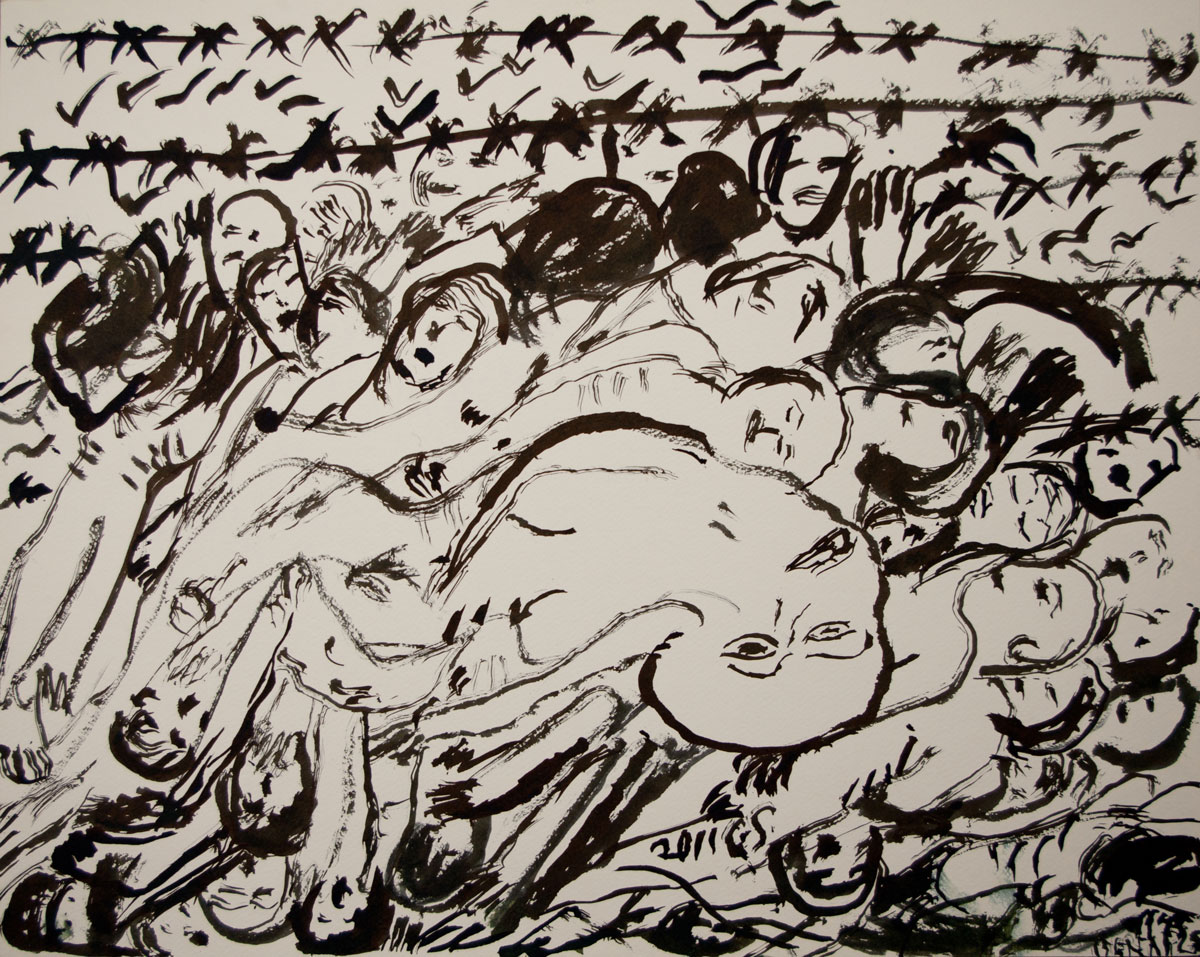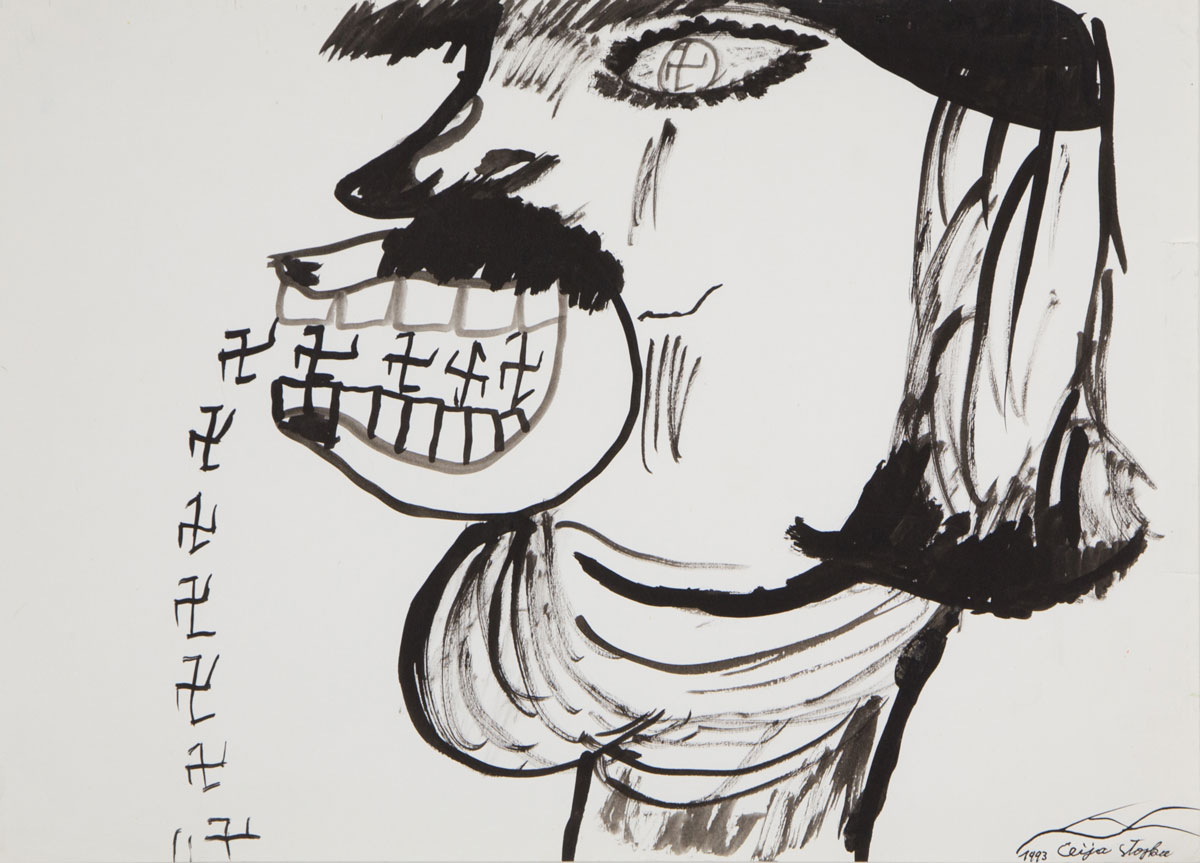ART-PRESENTATION: Ceija Stojka
 Austrian-Roma artist Ceija Stojka was a self-taught painter and narrator, and author of a late-blooming literary and pictorial body of work developed from 1986 onwards. Stojka was born into a family of traders who, after the annexation of Austria, were persecuted through the racial National Socialism laws and separated and interned in different concentration camps. In the 1980s, she began to draw on her memories, initially through oral narrations and poems, and subsequently through painting.
Austrian-Roma artist Ceija Stojka was a self-taught painter and narrator, and author of a late-blooming literary and pictorial body of work developed from 1986 onwards. Stojka was born into a family of traders who, after the annexation of Austria, were persecuted through the racial National Socialism laws and separated and interned in different concentration camps. In the 1980s, she began to draw on her memories, initially through oral narrations and poems, and subsequently through painting.
By Dimitris Lempesis
Photo: Malmö Konsthall Archive
Ceija Stojka who grew up in a travelling Roma family in Austria, was just under ten years old when she was deported to Auschwitz along with her mother and other family members. She survived internment in three different concentration camps (Auschwitz-Birkenau, Ravensbrück and Bergen- Belsen) before being liberated from the Nazis, who had by then almost wiped out her entire family. It wasn’t until almost forty years later that she finally broke her silence, and became one of the first Roma women to give an account of their own memories and experiences of the Holocaust during the Nazi regime. She has chronicled her childhood in several books, and in over 1,000 paintings and drawings. In the exhibition “Ceija Stojka” at Malmö Konsthall, around 140 works are presented alongside a selection of her writings. Ceija Stojka never received any training as an author or artist; she was self-taught, and painted on paper and card, employing oils or acrylic materials she applied either with a brush or directly with her fingers, using vivid colors and sharp lines to give her work vibrancy. She often gathered general views of outdoors scenes and rendered accounts in the form of oral narration. Other images distill critical moments in her life and in history, with a repeated use of symbolic motifs such as birds and barbed-wire fences. The impact of her works resides in the way she conveys a child’s emotions and experiences of the Holocaust in writings, paintings, and drawings. In 1994, Ceija Stojka wrote that “Auschwitz is only sleeping” on the verso of one of her paintings. It was vital to her that we never forget, and she sought to caution future generations that history might one day repeat itself.
Ceija Stojka who grew up in a travelling Roma family in Austria, was just under ten years old when she was deported to Auschwitz along with her mother and other family members. She survived internment in three different concentration camps (Auschwitz-Birkenau, Ravensbrück and Bergen- Belsen) before being liberated from the Nazis, who had by then almost wiped out her entire family. It wasn’t until almost forty years later that she finally broke her silence, and became one of the first Roma women to give an account of their own memories and experiences of the Holocaust during the Nazi regime. She has chronicled her childhood in several books, and in over 1,000 paintings and drawings. Begun in the end of the 1980s, following an important work of memory and writing initiated a few years earlier, the work is built around two major thematic and distinct axes. The first are the “light pictures”, memories of happy times that preceded the war, depicting life in the wagons, family, markets and the celebration of a generous and lush nature. The second are the “dark pictures”, showing oppression against the Roma under the Nazi regime, including arrest, atrocities, exterminations, survival and liberation. Ceija Stojka paints and draws the events of her life as her memories emerge. Nevertheless she takes several years to realize her first representations of the camps. Her body of work can be categorized in four thematic periods of her life:
“When we traveled”: In the works describing this period, Ceija Stojka figures a life before horror, in harmony with nature. That life is one of a child born on 23/5/1933 in Kraubath, Styria, from a line of horse dealers, the Lovara, who came to Austria in two main waves of migration : from Hungary and Slovakia in the second part of the 19th century and, from Hungary again in 1956. On the back of some paintings, Ceija describes this nomadic and clan life. Many Roma are already settled at the time and the Stojka family will be forced to do so under Nazi laws following the “Anschluss” in 1938 and will have to transform the wagon into a wooden cabin. The threat hovers: the pink, orange, purplish skies suggest dusk, in all its metaphorical dimensions, before the cold and the snow of a winter that will last for many years.
“The hunt”: Ceija Stojka’s mother, Sidonie, manages to hide her children for long months after the arrest of her husband, Karl Wackar, who will be deported to Dachau and executed at Hartheim Castle, refurbished in 1940 into a center of Euthanasia (Austria). The family gets help from friends and information about planned razzias. Sometimes they find shelter in a park in the 16th district of Vienna, not far from their house then surrounded by barbed wire. On 3/3/1943, Ceija, her mother and her siblings are locked up in the Viennese prison of Rossauer Lände. The works depict this period, the stalking and arrest of his family, and more widely, the persecution of Roma.
“Experiences in the camps”: The Stojka are deported to Auschwitz, where they are registered on 31/3/1943 and detained in section B-II-e, known as the “Zigeunerlager” (“Gypsy Camp”). The point of view of the child adopted by Ceija Stojka is exacerbated here, notably by the paintings framing at the height of the SS boots. Ceija Stojka uses different levels, the one of the dead at the ground level, or that of the bird overlooking the camp, or that of the escapee on the other side of the barbed wire. Always accurate in her descriptions, striving to date the episodes she represents, Ceija Stojka tells the story of life in the camps Auschwitz-Birkenau, Ravensbrück , Bergen-Belsen: for calls, humiliation and torture, forced labor, promiscuity in the barracks, details on some guards (including Dorothea Binz, Frau Rabel), corpses, smoking crematoria, the arrival of the British Army and the liberation of Bergen-Belsen camp on 15/5/1945.
“Back to life”: It will take Ceija Stojka and her mother long months to reach Vienna from Bergen-Belsen, after the liberation of the camp. The difficult return to life is expressed in the landscapes the artist paints. After years of starvation and hunger, Ceija Stojka paints the Austrian countryside with its fields and crops, woods, mountains and flowers. The sunflower, “the flower of the Rom”, which looks for the sun and represents hope, is the recurring motif along with the Virgin Mary, thanks to whom Ceija claims to have survived. This is also the time when Ceija is selling fabrics from door to door. Later, the Stojka family takes over the life of street vendors and sell carpets on markets. Her return to life is accompanied by the birth of her three children. Ceija Stojka depicts them on some of her paintings alongside other members of the family, including Karl her brother, and Kalman her husband.
Ceija Stojka writings: Karin Berger (author and film maker), whom she meets in 1986 and who encourages her to testify, transcribes and edits her manuscripts and allows the publication of her first text in 1988. In the small book “We live in the hidden” (1988), Ceija writes down her experience as a child in the concentration camps, a unique testimony. This book and Ceija’s great public personality evoke a movement within the Roma and Sinti, starting to fight for their rights in society. Ceija Stojka writes tirelessly until the last months of her life: testifying in her notebooks of her concentration camps experience and of the happy life that preceded and succeeded it, of her present, of her fears … She filled about thirty handwritten notebooks, meticulously set up since the middle of the 1980’s until her last days in 2013. These documents are multifaceted in their style, content and expression. In a larger sense, the diaries reflect the evolution of Ceija Stojka’s personality regarding her intimate memories and her reception of contemporary reality.
Photo: Ceija Stojka, Untitled, 1995, Acrylic on cardboard, 69,5 x 99 cm, Collection Antoine de Galbert-Paris, Photo: © Célia Pernot
Info: Curators: Noëlig Le Roux & Xavier Marchand, Malmö Konsthall, S:t Johannesgatan 7, Malmö, Duration: 30/1-18/4/2021, Days & Hours: Daily 10:00-17:00, www.konsthall.malmo.se
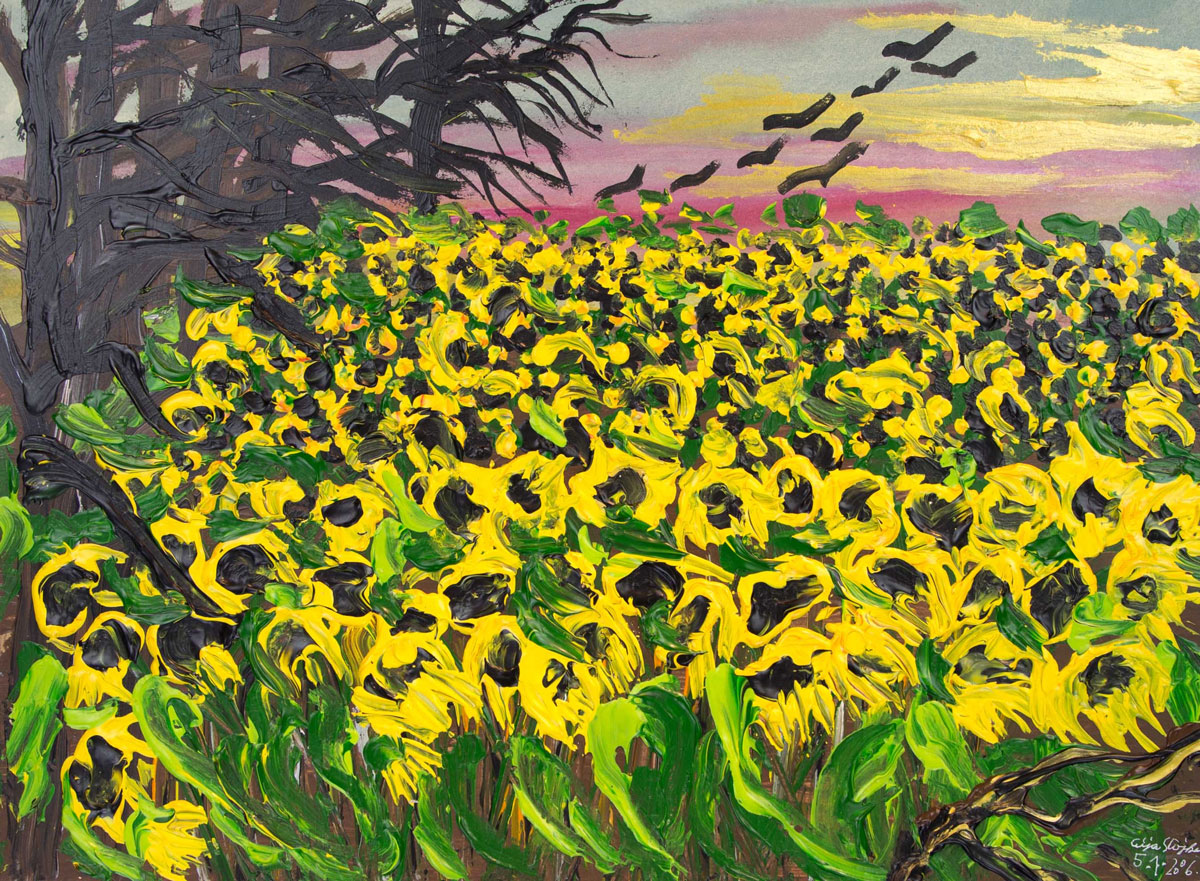



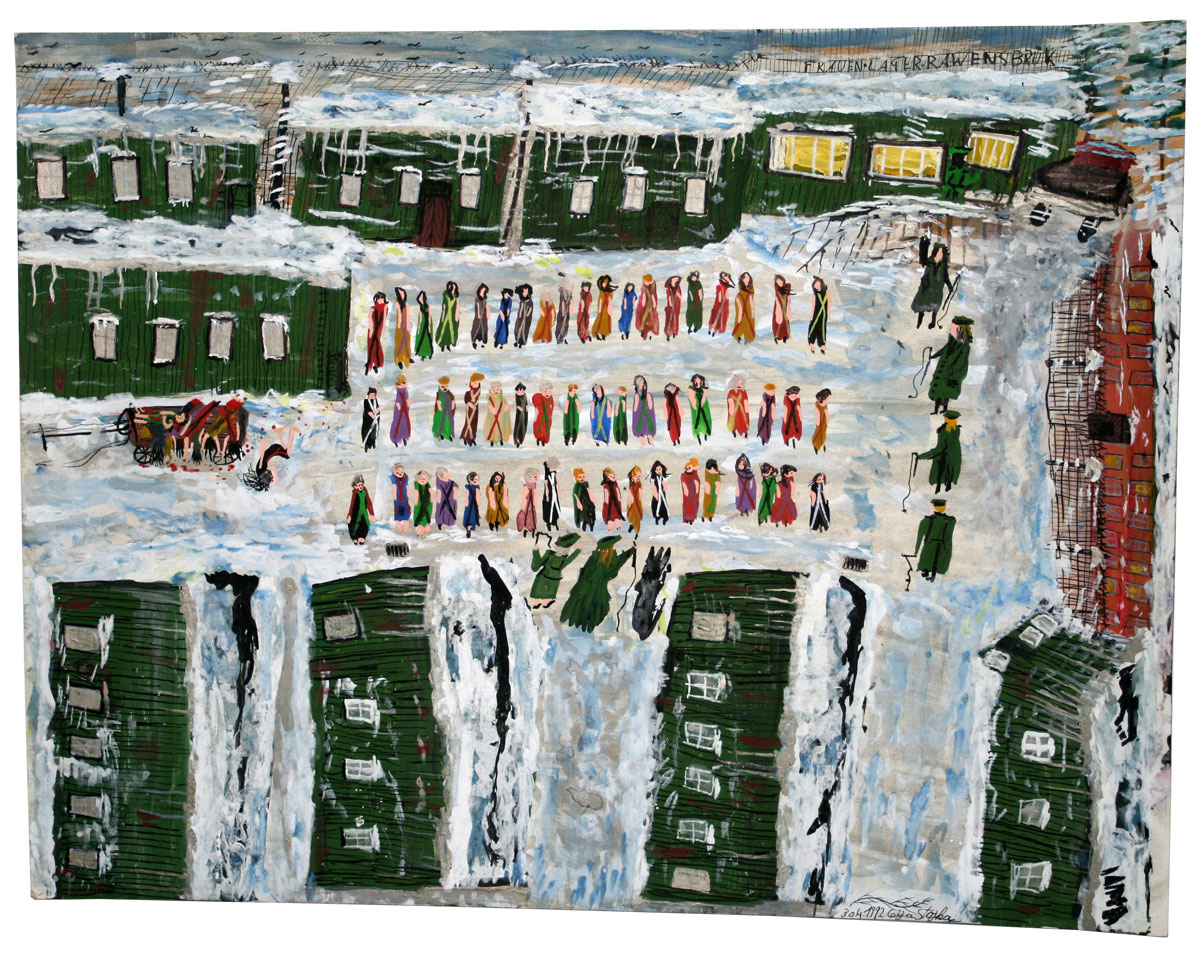
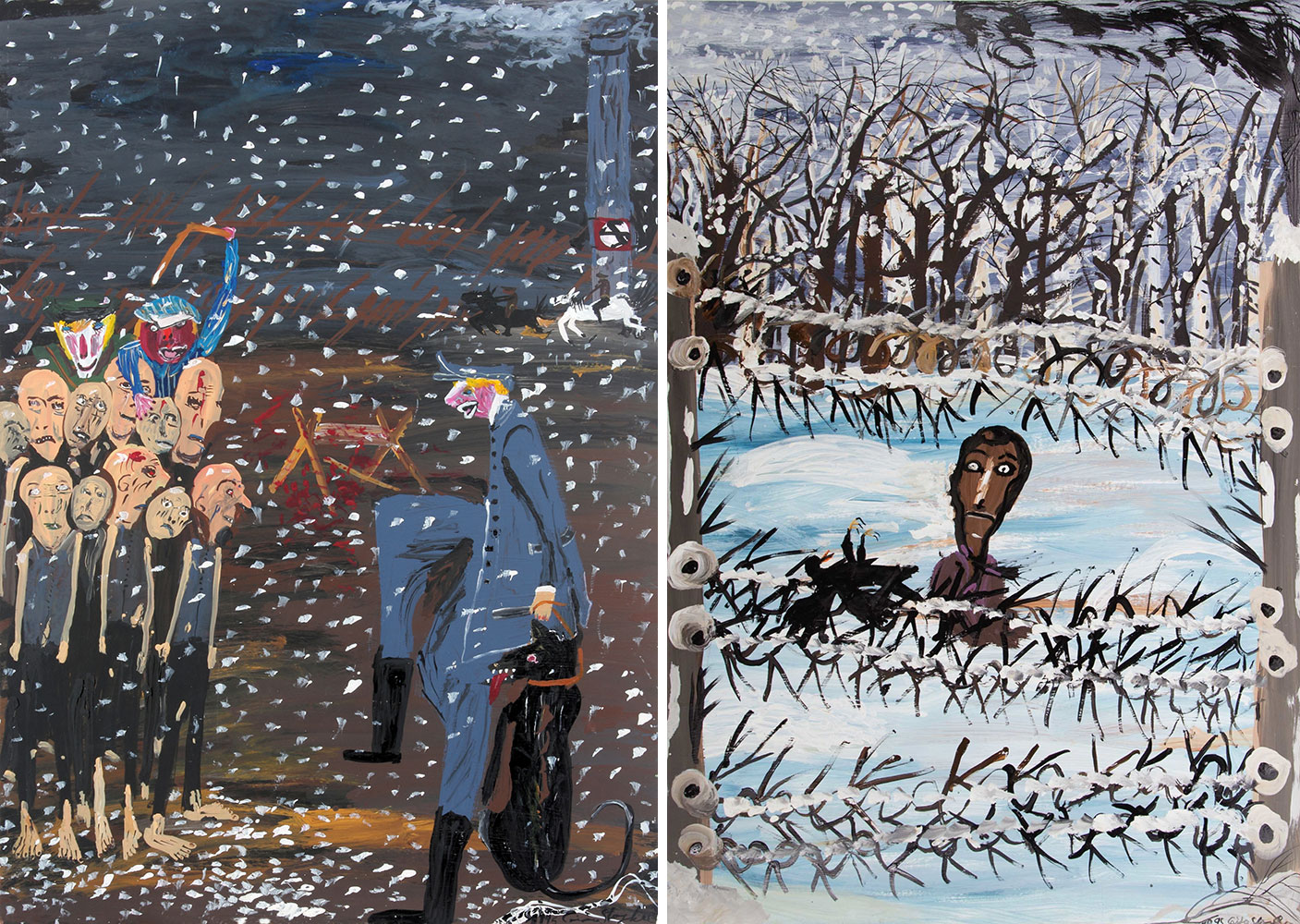
Right: Ceija Stojka, I Will Die from Hunger, 1995, Mixed media on cardboard, 100 x 70 cm, Collection Foundation Kai Dihkas-Berlin, Photo: Diego Catellano Cano
